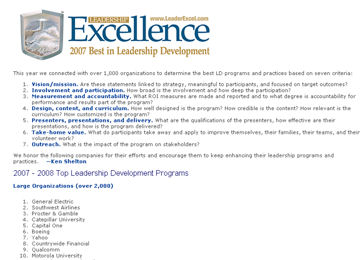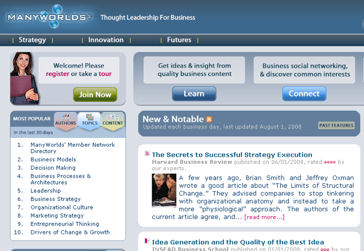As we mentioned, one of the keys in Section 1 Part 1 of the SEC’s recently posted interpretive release is whether or not a company website is a recognized channel.
Recognized Channel
So, how does a company go about meeting this standard? That is where things start to get gray. The SEC notes some factors (which it calls non-exclusive) that should be considered when determining whether or not the company web site is a recognized channel of distribution. And it comes down to these factors:
Has the company done a good enough job in letting investors know that the company has a web site and that they should be looking there for information?
To fulfil this requirement, companies should be including disclosure in its reports and press releases that not only lists the site address, but also makes note that the company routinely posts important information there. Furthermore, the company needs to have a pattern or practice of posting such information on the web site. Also, the company’s web site needs to be “designed to lead investors and the market efficiently to information about the company.”
As I noted in a previous posting, not all companies place the same emphasis on their Investor Relations page. If the information is being posted on the IR page, then the site needs to be designed to efficiently lead investors and the market to that page. This will be a much easier claim with a prominent link on the home page to the IR section. It will be a slightly tougher claim with a tiny font gray link lumped in with legal disclaimers at the bottom of the page. It will be an even tougher claim with no link on the front page at all! In other words, if you want your publications on the company web site to fulfill these requirements, then you want to make sure they are very easy to find.
But a well designed site isn’t enough. Companies must also take steps to alert the markets that they have posted such information on their site. The SEC specifically notes the use of “push” technology, or more specifically RSS feeds! If you’ve been thinking about adding a feed but couldn’t justify it, now you have your reason. Other methods include press releases or other channel noting that important information has been made available.
Furthermore, for such a web published information to meet this standard, the company must keep the web site current and accurate. Also considered is what other methods the company uses to disseminate information and whether those other methods are the predominant methods. In other words, if your company throws up information on the website as a second thought, don’t expect to meet this standard.
The last consideration is kind of an unfortunate one. The SEC notes that some websites and companies get better or wider coverage in the press and other media. It goes on to say that a smaller company that does not get much media reaction to its postings on its company website may not count on such disclosures to be pubic. So, a company like Google, where both the on-line and offline media hang on its ever word can be more assured in that postings on the company website are considered public than a smaller company that gets largely ignored in media coverage can.
Basically, the SEC concludes this piece of the release by noting that although posting information on a company website would not be considered “selective” it could still not be considered public.
The waiting period issue remains largely unchanged, excepting that if the information were disclosed on the website and considered public, then the waiting period clock would start when such information was posted on the site.
Lastly, the SEC vaguely hints that your website should not go down. If a release of information sends investors flocking to your website and it crashes, that will be bad news. Make sure your site can handle the traffic it normally gets, plus a big rush if you are looking to go this route.
The Summary
The agency sums it up in the paragraphs about the waiting period by saying,
“a large company that frequently uses its web site as a key resource for providing information, has taken steps to make investors and the market aware of this, and reasonably believes that its web site is well-followed by investors and other market participants,”
can expect to have a shorter waiting period. The rest of this section points to the same standard the whole way.
The Game Plan
So, here is what you need to start with:
- Put your company web address in every release and report along with a note that the company regularly posts important information there.
- Make a prominent link to your Investor Relations page, or put the information directly on the homepage. I’d go with Option 1.
- Start an RSS feed that allows subscribers to be notified of any and all information posted for investors.
- Send out a press release to coincide with information being published on the website. You can also do it in advance, but it needs to mention a date and time and you need to meet that date and time.
- Release ALL information on the website concurrently with any other form of release. If you send out a press release on Monday and post the information on the site on Tuesday, you won’t be able to claim that the web site is considered your primary distribution method. If you can, release on the website FIRST, then do the other. Even a couple minutes could tip the scales into making your website your primary distribution method.
- Make sure your website is ready to handle a big influx of traffic. It may never come, but better safe than sorry. Obviously this applied more to smaller companies than industry giants.
Next up? Satisfaction of Public Disclosure Requirement of Regulation FD
Note: This all has nothing to do with the term “public” as it pertains to insider trading.



